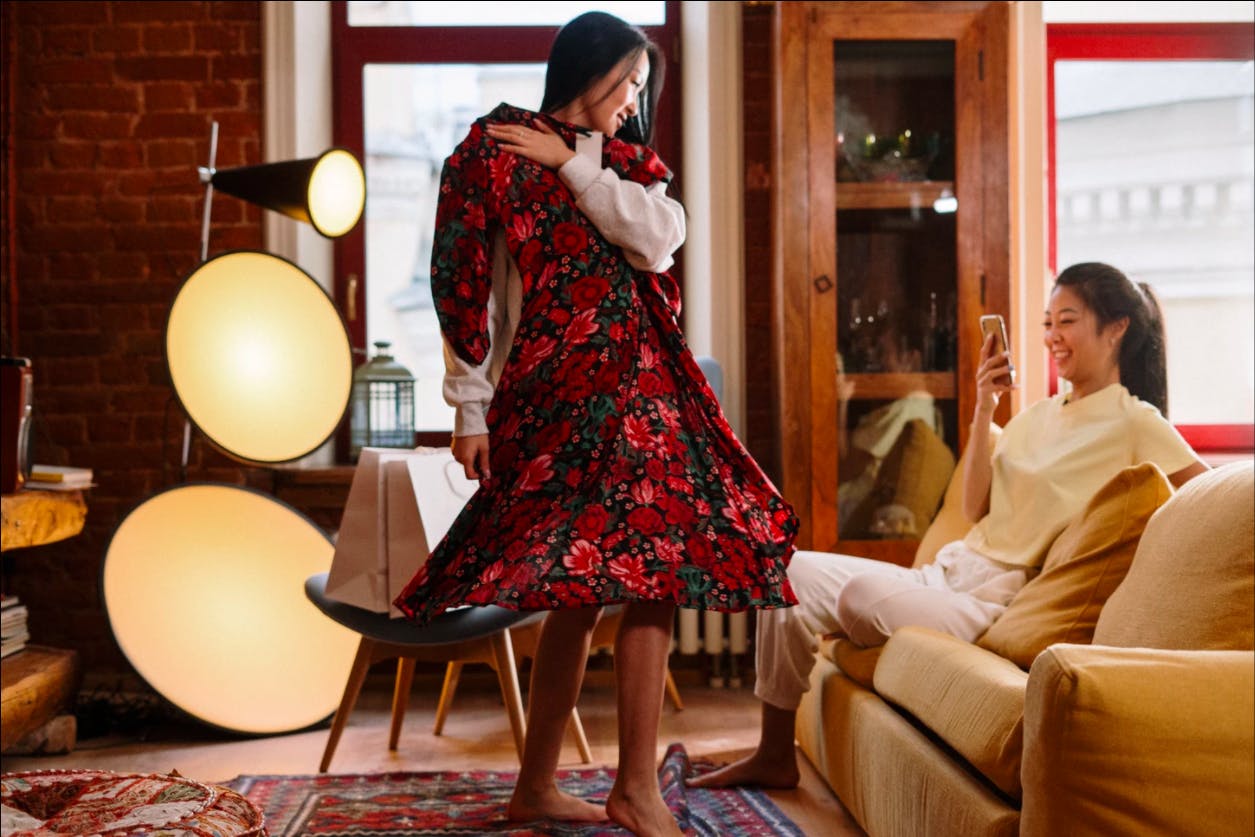
How to improve the online customer experience in fashion e-commerce?
"Shopping" is seen as a leisure activity, much more than a simple functional need to make purchases. This "pleasure" dimension is particularly strongly associated with fashion purchases, which represent much more than the possibility to buy clothes.
- This is due in particular to the efforts made by fashion brands over the last few years to enchant the shopping experience and put the customer experience at the heart of their retail strategy.
- In the physical world, fashion stores appear to be at the forefront of innovation for the customer experience. But online, the e-commerce sites of fashion brands are lagging behind and are content to repeat the models applied by pure players.
- As the share of e-commerce in apparel sales continues to grow, it is crucial for fashion brands to innovate to reenchant the online shopping experience.
Innovating in customer experience is crucial for fashion brands to differentiate
Customer experience is key in fashion...
Luxury brands understand that in order to encourage customers to buy more, their in-store experience must be totally unique.
In stores, brands have deployed a wealth of imagination to make the in-store visit more than just a shopping trip. From the architecture, decoration, windows, smells to the language used by sales consultants, fashion brands, and in particular luxury brands, have sought to dramatize the customer journey to create an exclusive and memorable experience.
By making the in-store journey a unique experience, brands improve customer loyalty, which is motivated to return to the store. A unique shopping journey also encourages conversion by creating circumstances that encourage impulse buying.
...but the e-commerce experience was not designed for fashion
"Online shopping was invented with functionality in mind; now it's time for the online product discovery experience to take over the space left vacant by in-store shopping" - said Sarah Marzano, an analyst at Gartner & Marketers, in April 2021 in Vogue Business.
Indeed, the e-commerce experience on fashion brands' websites is now modelled on the e-commerce best practices of pure players. Generalist marketplaces such as Amazon are indeed considered today as being at the forefront of online innovation.
However, in terms of purchase intention, customer behavior on these sites seems closer to shopping in a supermarket than to shopping in a luxury boutique. In particular, the navigation via a "home page - category page - product page" triptych seems very analytical. It seems far from the inspiring experience of shopping in a fashion store!
How to improve the online customer experience for fashion brands?
Personalize the online client relation to make the shopping experience more exclusive
To make the customer feel special, you have to give them attention. In stores, luxury brands rely heavily on the training of their sales consultants, who are much more than just salespeople and work on the customer's relationship with the brand.
To replicate this type of relationship online, brands can implement chat solutions. Whether it's a chatbot or a human advisor, chat is a customer experience that accompanies the customer through their navigation.
By recommending complementary items or suggesting complete outfits, the chat can become a "virtual stylist" and replace the sales consultant to create a unique and personalized online shopping experience.
Improve recommendations for a more intuitive exploration
To improve the customer experience during online shopping sessions, the Lyst application has developed a powerful recommendation engine inspired by streaming applications such as Netflix or Spotify.
On the Lyst marketplace, the customer can take a test to determine his "Fashion DNA" which will influence the items that will be proposed to him. The selection will then evolve according to his behavior and his purchases.
This recommendation-based navigation is a way to do away with the old "home / category / product" triptych for a more intuitive customer experience that encourages impulse buying.
Rethink online navigation with a virtual fitting room
When a customer wanders in a store, he doesn't necessarily do it in an analytical way by scanning the entirety of each department by type of articles. More and more brands are choosing to arrange their stores differently: by occasion for example (sportswear on one side, eveningwear on the other), by collection, or even by color.
When the customer fills his basket with clothes, it is because he is already imagining the outfits he will create.
By setting up a virtual fitting room like Veesual's Mix & Match, you help the customer in this projection process and you allow him to explore all the categories of your collection at the same time. It's a totally unique customer experience specifically designed for fashion e-commerce.
Thanks to the possibility to compose their own outfits, you allow the customer to project themselves, leaving them free to express their style. As in a store, shopping becomes a personalized experience.
RESOURCES
Discover our new article

"Complete the Look" Banners : is it enough ?
Scroll through any product page on a fashion eCommerce site and chances are you’ll see it: a “Wear it With” or “How to Style It” section, usually nestled just beneath the product. These are variations of what many fashion brands refer to as “Complete the Look” banners—a quick way to suggest complementary items that finish an outfit.

Has Online Shopping Lost Its Spark?
For years, e-commerce has delivered on convenience, speed, and scale. But something essential may have been lost along the way: the joy of shopping.

5 Ways Virtual Fitting Can Elevate Your Fashion Brand’s Online Presence
Virtual fitting has become a must-have in fashion e-commerce. Just like everything in fashion, ignoring the trend means falling behind. Virtual Fitting is more than a nice-to-have, it boosts your online shopping experience while making it more accessible and engaging for everyone.
